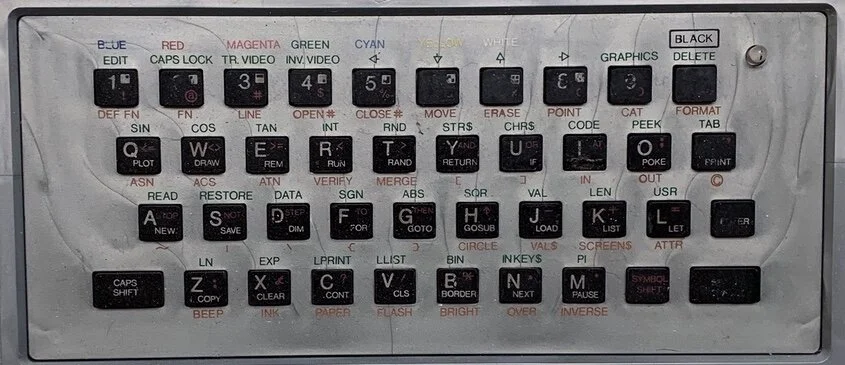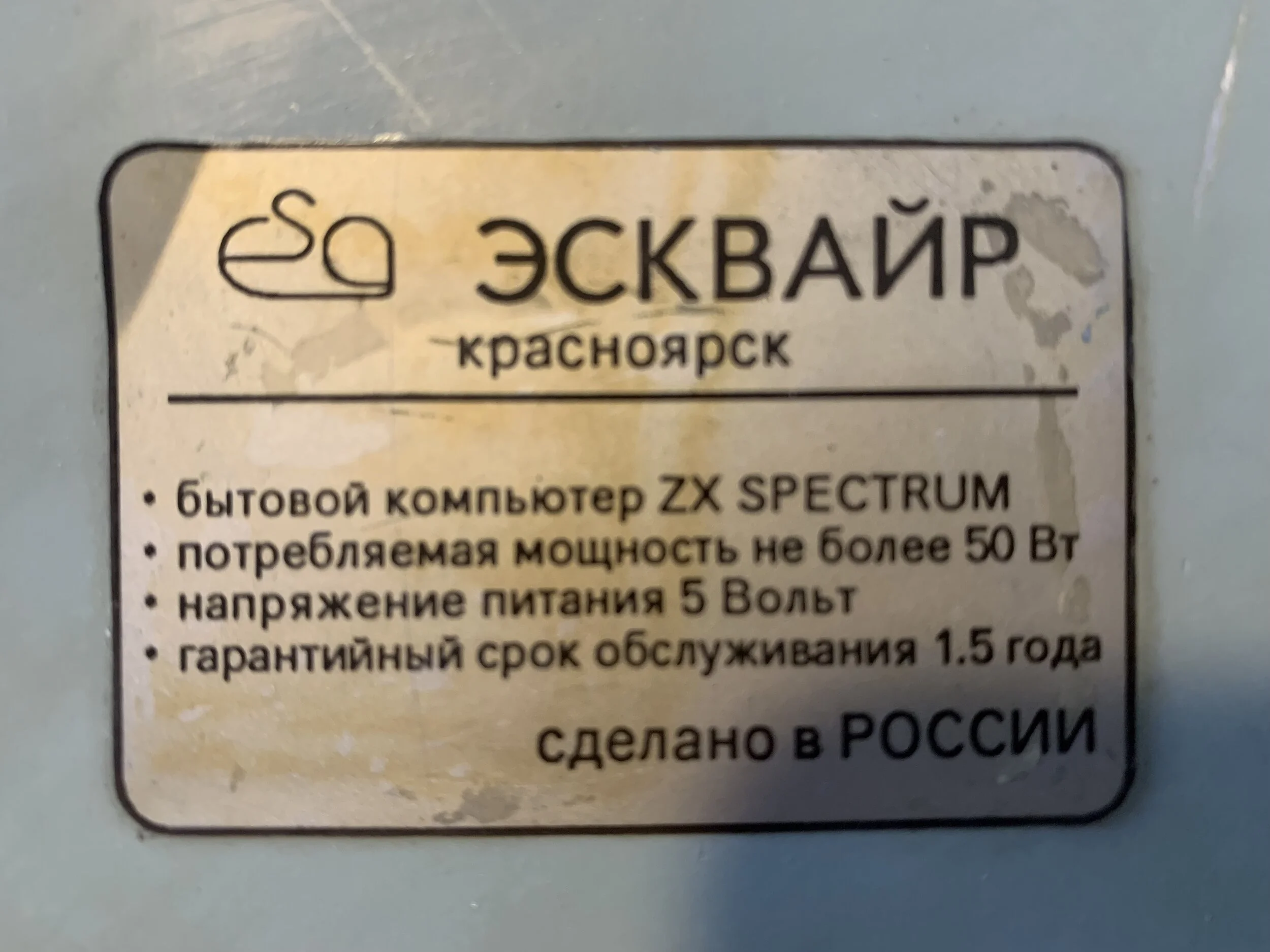A Spectrum in (lots of) spaaaaaaaaaace...
Part 3 of the Iron Curtain Clones series.
Other than the weird, swirly plastic on the key surround, this should look fairly familiar. The keycaps are a bit worn, and some of them are hard to read, but this is quite clearly a Spectrum keyboard layout. The keys are a tiny bit narrower than the original Spectrum keys. They’re also quite shiny. I can’t work out if the shiny bit is a coating added to protect the printing on the keys or whether it’s the natural finish of the key material.
If you slide your hand back and forth over the keys, they have much sharper edges than the gently rounded edges of the Spectrum keys. None of the other machines in my collection have keys that they can really be compared to.
The keys also feel somewhat precariously balanced on top of the mechanism. You can almost move them like a tiny direction pad. I’m not sure how this impacted the accuracy of the keyboard, i.e., did you have to hit the key dead center to get it to register, and like most of my collection, it’ll never be switched on to find out.
There are a couple of reasons that most of my collection doesn’t work. First, I don’t have the space, inclination or skill to have them up and running. Second, since I’m primarily interested in how they look, I can usually find one much cheaper if it’s definitely not working or sold “as-is”.
So why the focus on the keyboard? Well, once I start talking about the rest of this machine, it’s easy to lose sight of the keyboard.
OK, that’s a bit of an exaggeration, but holy crap, look at that teeny, weeny keyboard in that enormous sea of gray plastic.
I can’t find much information on this computer anywhere. The name including “64 K” is a bit odd because the original Spectrum had a maximum of 48KB, but I don’t see how it can be anything other than a Spectrum clone with that keyboard.
Here’s the size comparison between the YPRA(?) and an original Spectrum. The keyboard area on both is very similar, but you can clearly see the different widths of the keys. But the echoing void around the YPRA’s keyboard means that in size, the closest match I can find in my collection is the Atari 65XE which has a “proper” keyboard.
As you can imagine, the YPRA weighs a tad more than the Spectrum. The Spectrum weighs in at just under 1lb 4oz or 570 grams. The YPRA hits the scales at a whopping 3lbs 5oz or 1520 grams. You can just about make out the numbers in the terrible picture below.
So what’s with all that weight? Why is a Spectrum clone so big. It all becomes clearer when you open the case.
The left-hand side is dominated by a built-in power supply which is very unusual for a Spectrum clone, and really most home computers of the period. The Apple II and the BBC micro both had internal PSUs but outside of that, wall warts or cable warts (?) were the norm. That certainly takes care of a significant portion of the weight.
A lot of the size is the result of a very spacious motherboard. I’m not sure why but there’s a lot more space between the components than many other clones. I’m guessing it may be something to do with the manufacturing process. I wonder whether it was a kit intended for home assembly and the components were spaced more widely to make life easier for beginning solderers.
The larger chip in the middle is a Z80A. Above that are a couple of socketed chips that I’m guessing are EEPROMs. The other large chip at the top is a KP580BB55A which is a programmable interface chip, and a clone of the Intel i8255. What’s slightly strange is that this chip was intended to be used with Intel 8080 based computers. But this is moving far, far beyond my technical knowledge so I’m just going to have to leave it at that.
The inside of the top of the case gives another view of that dinky little keyboard all alone in that expanse of silver.
I don’t have much more to say about this machine but let’s take a quick tour around the outside.
The YPRA is wedge-shaped so it’s pretty tall by the time you get to the back. There are ventilation holes on this end because the PSU is at this end. The other side is just blank.
The bottom has a significant amount of ventilation, again, mostly at the end where the PSU lives. I’m not sure how the case was manufactured, but it looks in the photos like thing metal that has been dented. In reality, it’s fairly thick silver plastic with some odd swirly patterns.
The label states that the power supply takes 220v at 50Hz. Beyond that, there’s nothing more about its origins, other than it was manufactured in 1991.
In addition to even more ventilation at the PSU end, there are a few connectors and buttons. From left to right, my best guesses are a reset switch, tape in and out, an expansion bus, video out, a snipped-off power cable, a fuse, and a power switch. The expansion bus is obviously not a Spectrum style edge connector, and its close proximity to the Intel i8255 clone makes me wonder if it’s an older PC style connector.












